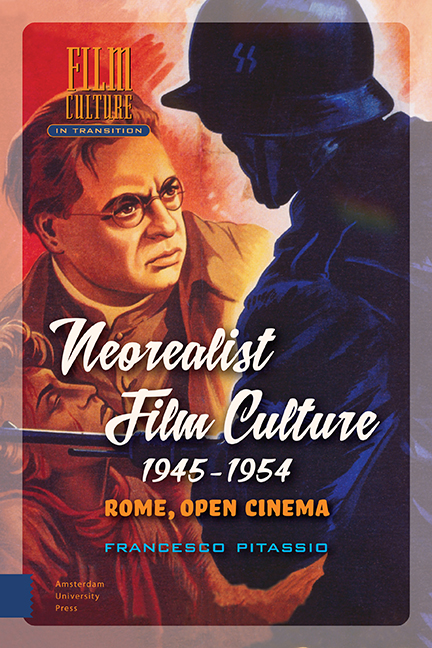Book contents
- Frontmatter
- Contents
- Acknowledgements
- Introduction: An Uncertain Direction. Neorealist Cinema and Transitional Culture
- 1 Locating the Real: National, International, and Transnational Neorealism
- 2 Lies of Memory: Post-war Culture, Remembrance, and Documentary Filmmaking
- 3 Looking at the Images: Neorealist Visual Culture
- 4 Actors, Non-professional Actors, Starlets, and Stars: Film Performance in the Neorealist era
- Bibliography
- About the Author
- Name Index
- Film Index
4 - Actors, Non-professional Actors, Starlets, and Stars: Film Performance in the Neorealist era
Published online by Cambridge University Press: 21 November 2020
- Frontmatter
- Contents
- Acknowledgements
- Introduction: An Uncertain Direction. Neorealist Cinema and Transitional Culture
- 1 Locating the Real: National, International, and Transnational Neorealism
- 2 Lies of Memory: Post-war Culture, Remembrance, and Documentary Filmmaking
- 3 Looking at the Images: Neorealist Visual Culture
- 4 Actors, Non-professional Actors, Starlets, and Stars: Film Performance in the Neorealist era
- Bibliography
- About the Author
- Name Index
- Film Index
Summary
Abstract
Film critics and film history celebrate neorealism for its use of nonprofessional performers in a number of masterpieces. However, as lucid observers such as Andre Bazin pointed out in the late 1940s, neorealist films relied on a mixture of professional and non-professional actors. This chapter describes the debate on film performance and its origins from the mid-1930s to the early 1950s and looks at how the use of non-professional performers was associated with neorealism's aim to present a non-narrative cinematic representation. Moreover, the chapter examines the relationship between neorealism, non-professional performers, and phenomena such as popular theatre and new female stardom. The chapter ends with a case study of the most renowned neorealist actress, Anna Magnani.
Keywords: Stardom; film performance; film criticism; Anna Magnani
A Stroll by the Sea
A fish lies on the plate of a huge metal scale. The camera pans upwards and frames a boy holding the scale while a fish wholesaler is rhythmically uttering the price he is willing to pay. They are standing on a dock, other fishermen surrounding them. Behind this human circle, a kid pops up. He is looking for someone. The camera follows the boy to the right and then to the left, trying to track him down among a crowd made up of buyers, sellers, and bystanders as he carries on his pursuit. A cross-eyed wholesaler argues with a fisherman, raises his arm, holding a huge octopus, and tosses it to the ground. The camera pulls away toward the open sea and frames the whole community, gathered on the dock for the fish market, and eventually includes the boats beyond the farther side of the dock and even the poor houses in the background.
This long tracking shot is one of the early sequences of The Earth Trembles, an undisputed masterpiece of Italian neorealism and one of its most radical achievements. The shooting, which took place entirely on location in a poor village on the eastern shores of Sicily, lasted almost eight months, as if the film's production was the equivalent of an ethnographic expedition. The film's shooting occurred in difficult conditions due to the lack of adequate facilities and finances and a partly inexperienced crew.
- Type
- Chapter
- Information
- Neorealist Film Culture, 1945–1954Rome, Open Cinema, pp. 263 - 336Publisher: Amsterdam University PressPrint publication year: 2019



